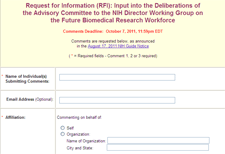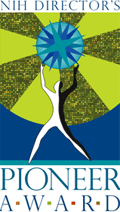We’re looking for a program director (also known as a “health scientist administrator/program officer”) to manage research grants and other types of awards focused on the mechanisms of DNA replication, recombination and/or mutagenesis and repair. Candidates should have expertise in the use of state-of-the-art molecular genetics and/or genomics-based approaches to elucidate mechanistic aspects of DNA metabolism, gene expression or related cellular processes. Familiarity with NIH extramural funding as an applicant, reviewer or NIH scientific administrator is a plus, and outstanding communications skills are a must.
The position is in the Genetic Mechanisms Branch of NIGMS’ Division of Genetics and Developmental Biology. Please see the NIH HSA Website for position requirements and detailed application procedures. Note that this is a global recruitment for program officer positions throughout NIH. In the application materials, be sure to emphasize aspects of your training, expertise and research interests that make it clear you’re a good fit for what we’re looking for, as described above.
The vacancy announcement closes on September 2.
Not looking for a position right now? Please help us out by forwarding this information to others who might be interested.


 As you know from a previous post, in April we issued Investing in the Future: NIGMS Strategic Plan for Biomedical and Behavioral Research Training. Since then, several NIGMS working groups have been very busy devising practical ways to implement the plan’s 15 action items. Last month, we brought together about 25 stakeholders—training grant directors, other university researchers, deans, department chairs and others—to give us a reality check on some of our proposals. We were gratified to see that we are on course to implement most of the measures the plan calls for by early 2012.
As you know from a previous post, in April we issued Investing in the Future: NIGMS Strategic Plan for Biomedical and Behavioral Research Training. Since then, several NIGMS working groups have been very busy devising practical ways to implement the plan’s 15 action items. Last month, we brought together about 25 stakeholders—training grant directors, other university researchers, deans, department chairs and others—to give us a reality check on some of our proposals. We were gratified to see that we are on course to implement most of the measures the plan calls for by early 2012.
 NIH recently conducted an evaluation of the short-term outcome of the NIH Director Pioneer’s Award program, which started in 2004 and is managed by NIGMS. The report was positive and confirmed that the research supported by the program truly has been pioneering, not only in pursuing highly creative and often unconventional approaches but also in leading to additional “high-risk, high-reward” programs at NIH and other funding agencies.
NIH recently conducted an evaluation of the short-term outcome of the NIH Director Pioneer’s Award program, which started in 2004 and is managed by NIGMS. The report was positive and confirmed that the research supported by the program truly has been pioneering, not only in pursuing highly creative and often unconventional approaches but also in leading to additional “high-risk, high-reward” programs at NIH and other funding agencies.